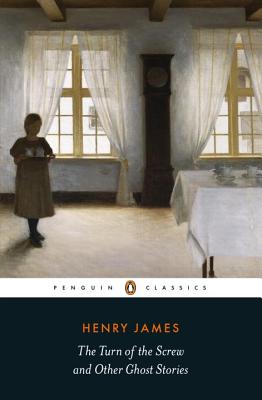APS TOGETHER
The Turn of the Screw by Henry James

Hosted by Garth Greenwell
Began on July 8, 2020
Share this book club
The Turn of the Screw is a story about ghosts (or is it?), madness, the vulnerability of children, the lure of desire. It's one of the most disquieting books I know, and genuinely shocking—but all of its horror is conveyed through suggestion, implication, gesture. It's a profound interrogation of the nature of evil; it's also immensely fun. For my money James is the greatest stylist in English; his sentences are exquisite instruments for hyper-fine articulation of emotion and headlong plummets into the abyss. The Turn of the Screw is one of his most enduring and beloved stories, and it's an excellent entry point for readers new to James.

Garth Greenwell
is the author of What Belongs to You, which won the British Book Award for Debut of the Year, was longlisted for the National Book Award, and was a finalist for six other awards, including the PEN/Faulkner Award, the James Tait Black Memorial Prize, and the Los Angeles Times Book Prize. His new book of fiction, Cleanness, was published in January. A 2020 Guggenheim Fellow, he lives in Iowa City with his partner, the poet Luis Muñoz.

Daily Reading
Day 1
Prologue–Chapter 1
July 9, 2020 by Garth Greenwell
James is famous for refusing to speak plainly, preferring ambiguity & suggestion. This thrills some readers & frustrates others. In Turn of the Screw, James believed the reader would fill in the gaps w/ things more terrifying than he could invent. —Garth
Day 2
Chapter 2–3
July 10, 2020 by Garth Greenwell
My first encounter with James was through Benjamin Britten’s great opera of Turn of the Screw. He brilliantly compresses the first few chapters of the novella, as you can see in the first ~15m of this Opera North production.—Garth
Day 3
Chapter 4–5
July 11, 2020 by Garth Greenwell
James is my favorite stylist in English, & this sentence is a marvel: at once balanced (“whatever it was that I knew” / “nothing was known”) & thrown off-kilter by inversion (putting the “of” phrase first). It enacts the governess’s bewilderment.—Garth
Day 4
Chapters 6–7
July 12, 2020 by Garth Greenwell
Chs. 6-7 bring to the fore one of the book’s central questions: What exactly did Quint do? What have these children (& Miss Jessel) suffered?
Day 5
Chapters 8–9
July 13, 2020 by Garth Greenwell
James’s difficulty comes from his need to capture feelings too nuanced for standard notation. Here: eagerness for information that confirms a view you're determined not to hold. Is there a German word for that? I don't think there's one in English. —Garth
Day 6
Chapters 10–11
July 14, 2020 by Garth Greenwell
The governess obsessively observes the children, trying to gather evidence. But what evidence would suffice? A boy sneaking out of his room? She wants to see a reality beneath appearances, “the back of the tapestry.” —Garth
Day 7
Chapters 12–13
July 15, 2020 by Garth Greenwell
The logic of the witch hunt: the appearance of goodness has become evidence of wickedness. —Garth
Day 8
Chapters 14–16
July 16, 2020 by Garth Greenwell
The challenge of 1st-person narration is making the story bigger than its narrator. James gives us enough of others' reactions to see—perhaps!—around the governess’s view. Here, are we shown how the others manage her increasingly unhinged behavior? —Garth
Day 9
Chapters 17–19
July 17, 2020 by Garth Greenwell
James is the great novelist of introspection—but he is also a very great writer of scenes. Ch 17 is a masterpiece of stagecraft, & ends w/ maybe the book's creepiest moment. A gust of wind, a shriek, a candle blown out—& all the windows shut tight. —Garth
Day 10
Chapters 20–21
July 18, 2020 by Garth Greenwell
It’s possible she’s a haunted little demon child, but I love to see neglected, dismissed Flora finally snap at the governess. The sentence snaps too, from the tumble of adjs to the repetition of “and” to the final inversion of adj & noun. The drama! —Garth
Day 11
Chapters 22-24 (The End)
July 19, 2020 by Garth Greenwell
The novella's title is usually read as referring to a torture device: a heightening of tension & so of pain. It appears twice in the text: in the prologue, where that interpretation makes sense—& here. Should virtue be an instrument for torture? I can never read this passage without thinking of T.S. Eliot’s lines, from “Little Gidding”: “Of things ill done & done to others’ harm / Which once you took for exercise of virtue.” —Garth
